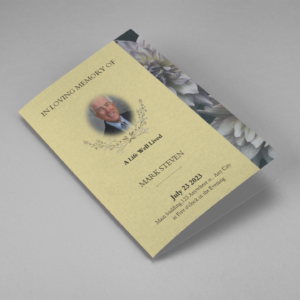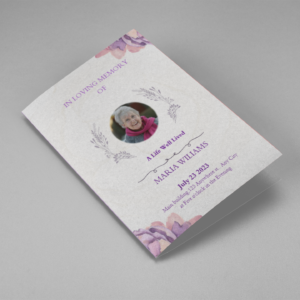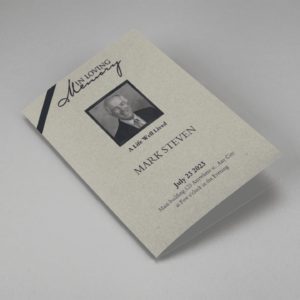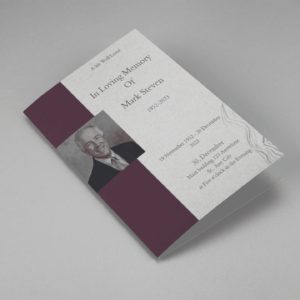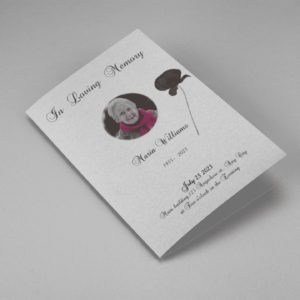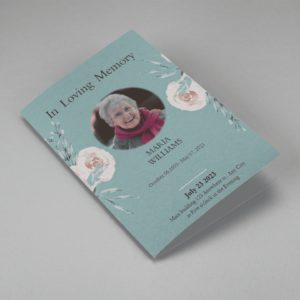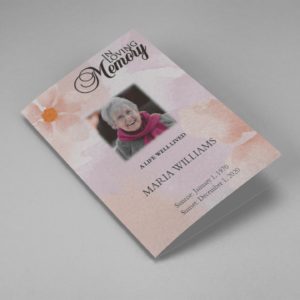Basic Obituary Format: A Comprehensive Guide to Crafting Meaningful Tributes
In times of loss, writing an obituary can be a daunting task. It’s an opportunity to honor and celebrate the life of a loved one while also informing friends, family, and the community about their passing. Crafting a basic obituary format requires careful thought and consideration to ensure it captures the essence of the deceased.
Understanding the Purpose of an Obituary
An obituary serves as a formal announcement of a person’s death, providing essential information such as their name, date of birth, date of death, and details about their life. It serves as a notice to inform the community, friends, and extended family members about the passing. Additionally, an obituary serves as a tribute to the deceased, highlighting their accomplishments, personality traits, and the impact they had on others.
Key Components of a Basic Obituary
Introduction
- Start with the full name of the deceased, including any nicknames they may have had.
- Include their age at the time of death and the date and place of their passing.
- Example: “John Doe, age 65, of [City], passed away peacefully on [Date] at [Location].”
Biographical Information
- Provide a brief overview of the deceased’s life, including information about their family, education, career, and interests.
- Highlight significant milestones such as marriage, children, career achievements, and community involvement.
- Example: “John was born on [Date] in [City] to parents [Parents’ Names]. He attended [School/University] and went on to pursue a successful career in [Profession]. He married [Spouse’s Name] in [Year] and together they raised two children, [Names]. John was known for his passion for [Hobby/Interest] and his dedication to his community.”
Surviving Family Members
- Include the names of immediate family members who have survived the deceased, such as spouse, children, siblings, and grandchildren.
- You can also mention other close relatives or friends if desired.
- Example: “John is survived by his loving wife, [Spouse’s Name], his children [Children’s Names], his siblings [Siblings’ Names], and his grandchildren [Grandchildren’s Names]. He is also survived by numerous nieces, nephews, and friends who will cherish his memory.”
Funeral Arrangements
- Provide details about any funeral or memorial services, including the date, time, and location.
- You can also include information about visitation hours, burial or cremation arrangements, and any requests for donations or flowers.
- Example: “A funeral service to celebrate John’s life will be held on [Date] at [Location]. Visitation will take place prior to the service from [Time]. In lieu of flowers, donations can be made to [Charity/Organization].”
Tips for Writing a Meaningful Obituary
Keep it Personal
- Share anecdotes, stories, and memories that illustrate the personality and character of the deceased.
- Include details that highlight their passions, hobbies, and interests.
- Avoid clichés and generic language, and instead focus on capturing the unique essence of the individual.
Be Concise Yet Comprehensive
- While it’s important to provide enough information to paint a picture of the deceased’s life, avoid overwhelming readers with unnecessary details.
- Keep sentences and paragraphs concise, and focus on including the most significant and relevant information.
Review and Revise
- Take the time to review and revise the obituary to ensure accuracy and clarity.
- Consider seeking input from other family members or friends to ensure that the obituary reflects the collective memory and sentiment of those who knew the deceased.
Example Of Obituary
Example obituaries serve as valuable guides for crafting a meaningful tribute. They provide a clear illustration of how to structure an obituary, including the essential elements such as the deceased’s name, age, date of passing, and biographical information. Example of obituary also showcase the tone and style of writing, helping to convey the personality and character of the individual. By studying examples, writers can gain inspiration for storytelling, ensuring that the obituary captures the essence of the deceased. Additionally, examples can help writers avoid common pitfalls and clichés, guiding them towards creating a heartfelt and authentic tribute.
Funeral Obituary Templates
-
Searching for a Oak Leaf With Gold Oval Frame Half Page Funeral Program that is easy to print and amass and has a cutting-edge look? The Oak Leaf With Gold Oval Frame Half Page Funeral Program is the Perfect decision because it measures 8.5”x 5.5”.
- No Limitation on Content, Edit anything
- Edit anytime – unlimited revisions even after purchased
- Get a printable PDF downloaded to get it printed on your own.
-
Searching for a Brown and White Classic Funeral Program Half Page Program that is easy to print and amass and has a cutting-edge look? The Brown and White Classic Funeral Program Half Page Program is the Perfect decision because it measures 8.5”x 5.5”.
- No Limitation on Content, Edit anything
- Edit anytime – unlimited revisions even after purchased
- Get a printable PDF downloaded to get it printed on your own.
-
Searching for a Purple Elegant Watercolor Half Page Funeral Program Template that is easy to print and amass and has a cutting-edge look? The Purple Elegant Watercolor Half Page Funeral Program Template is the Perfect decision because it measures 8.5”x 5.5”.
- No Limitation on Content, Edit anything
- Edit anytime – unlimited revisions even after purchased
- Get a printable PDF downloaded to get it printed on your own.
-
Searching for a Cream and Green Photo Obituary Half Page Program that is easy to print and amass and has a cutting-edge look? The Cream and Green Photo Obituary Half Page Program is the Perfect decision because it measures 8.5”x 5.5”.
- No Limitation on Content, Edit anything
- Edit anytime – unlimited revisions even after purchased
- Get a printable PDF downloaded to get it printed on your own.
-
Searching for a Cream Simple Elegant Photo Church Half Page Program that is easy to print and amass and has a cutting-edge look? The Cream Simple Elegant Photo Church Half Page Program is the Perfect decision because it measures 8.5”x 5.5”.
- No Limitation on Content, Edit anything
- Edit anytime – unlimited revisions even after purchased
- Get a printable PDF downloaded to get it printed on your own.
-
Searching for a Samovar Silver Half Page Funeral Program Template that is easy to print and amass and has a cutting-edge look? The Samovar Silver Half Page Funeral Program Template is the Perfect decision because it measures 8.5”x 5.5”.
- No Limitation on Content, Edit anything
- Edit anytime – unlimited revisions even after purchased
- Get a printable PDF downloaded to get it printed on your own.
-
Searching for an Elegant Beige Half Page Funeral Program Template that is easy to print and amass and has a cutting-edge look? The Elegant Beige Half-Page Funeral Program Template is the Perfect decision because it measures 8.5”x 5.5”.
- No Limitation on Content, Edit anything
- Edit anytime – unlimited revisions even after purchased
- Get a printable PDF downloaded to get it printed on your own.
-
Searching for a White Floral Pro Half Page Funeral Program Template that is easy to print and amass and has a cutting-edge look? White Floral Pro Half Page Funeral Program Template is the Perfect decision because it measures 8.5”x 5.5”.
- No Limitation on Content, Edit anything
- Edit anytime – unlimited revisions even after purchased
- Get a printable PDF downloaded to get it printed on your own.
-
Searching for a Grey and Burgundy Elegant Half Page Funeral Program Template that is easy to print and amass and has a cutting-edge look? Grey and Burgundy Elegant Half Page Funeral Program Template is the Perfect decision because it measures 8.5”x 5.5”.
- No Limitation on Content, Edit anything
- Edit anytime – unlimited revisions even after purchased
- Get a printable PDF downloaded to get it printed on your own.
-
Searching for a Soft Green and Grey Minimalist Floral Half Page Funeral Program Template that is easy to print and amass and has a cutting-edge look? Soft Green and Grey Minimalist Floral Half Page Funeral Program Template is the Perfect decision because it measures 8.5”x 5.5”.
- No Limitation on Content, Edit anything
- Edit anytime – unlimited revisions even after purchased
- Get a printable PDF downloaded to get it printed on your own.
-
Searching for a Gray Elegant Oval Frame Half Page Funeral Program Template that is easy to print and amass and has a cutting-edge look? Gray Elegant Oval Frame Half Page Funeral Program Template is the Perfect decision because it measures 8.5”x 5.5”.
- No Limitation on Content, Edit anything
- Edit anytime – unlimited revisions even after purchased
- Get a printable PDF downloaded to get it printed on your own.
-
Searching for a Blue Organic Minimal Half Page Funeral Program Template that is easy to print and amass and has a cutting-edge look? Blue Organic Minimal Half Page Funeral Program Template is the Perfect decision because it measures 8.5”x 5.5”.
- No Limitation on Content, Edit anything
- Edit anytime – unlimited revisions even after purchased
- Get a printable PDF downloaded to get it printed on your own.
-
Searching for a Pink and Orange Watercolour Half Page Funeral Program Template that is easy to print and amass and has a cutting-edge look? Pink and Orange Watercolour Half Page Funeral Program Template is the Perfect decision because it measures 8.5”x 5.5”.
- No Limitation on Content, Edit anything
- Edit anytime – unlimited revisions even after purchased
- Get a printable PDF downloaded to get it printed on your own.
-
Searching for a Pink Floral Paper Half Page Funeral Program Template that is easy to print and amass and has a cutting-edge look? Pink Floral Paper Half Page Funeral Program Template is the Perfect decision because it measures 8.5”x 5.5”.
- No Limitation on Content, Edit anything
- Edit anytime – unlimited revisions even after purchased
- Get a printable PDF downloaded to get it printed on your own.
Funeral Programs : Helping Videos
Frequently Asked Questions On Basic Obituary Format
Crafting a basic obituary requires sensitivity, thoughtfulness, and attention to detail. By following the fundamental elements outlined in this guide, you can create a meaningful tribute that honors the life and legacy of your loved one. Here are some questions were discussed below:
What are the key components of a basic obituary?
A basic obituary includes the full name of the deceased, their age at the time of death, the date and place of passing, a brief biography highlighting their life’s significant aspects, surviving family members, and funeral arrangements.
How should I structure a basic obituary?
Start with the deceased’s full name, age, and date/place of passing. Follow with a brief biography, mention surviving family members, and provide details about funeral arrangements or memorial services.
Can I personalize a basic obituary?
Yes, personalization is encouraged. Include anecdotes, stories, and memories that reflect the deceased’s personality and character. Avoid clichés and generic language.
What should I avoid when writing a basic obituary?
Avoid using overly formal or impersonal language. Instead, focus on capturing the essence of the individual. Also, avoid sharing sensitive or controversial information unless it’s essential to understanding the person’s life.
Should I seek input from others when writing a basic obituary?
It can be helpful to seek input from other family members or close friends to ensure that the obituary accurately reflects the deceased’s life and legacy. Collaboration can also help capture different perspectives and memories.
How should I conclude a basic obituary?
Conclude with details about funeral or memorial services, including the date, time, and location. You can also include any additional information or requests, such as requests for flowers or donations.



